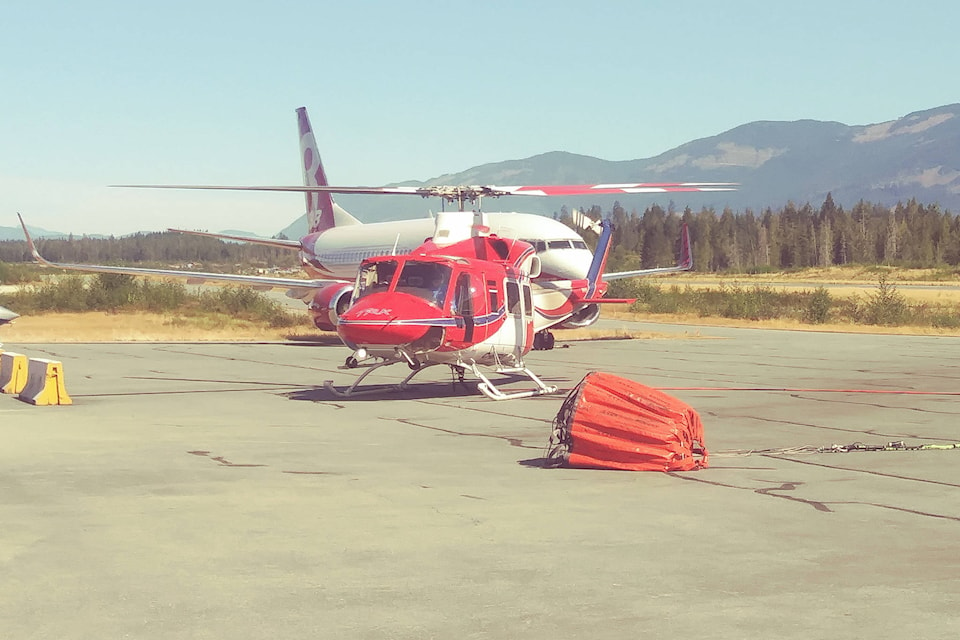The Alberni Valley Regional Airport was a busy place in August as a result of the wildfires that burned in the area. The BC Wildfire Service was able to use the airport as a hub for its firefighting helicopters, airport manager Mark Fortune said.
“Most of our activity during that event was related to firefighting activity,” he said. “They’ve been using Port Alberni as a refuelling base. The airport fueling system has been taking advantage of that helicopter traffic.”
When the heavy-lift helicopters were working the wildfires, they refuel often—carrying less fuel and running lighter so they can carry more water. “One helicopter can be in there three times in an hour refuelling,” he explained.
The Thunderbirds wildfire crew is also based at the airport and has its own helicopter pad at the far end of the property, by Coulson Aviation and the private hangars.
At one point during firefighting efforts the BC Wildlife Service brought in a separate fuel system “because they were worried about using all our jet fuel, but that was only for a week,” he said.
Because BCWS crews are often based in remote places without access to airports, they are self-contained, he explained. “Quite often they don’t have an airport that can supply that kind of fuel.”
What fuel they did buy at the Alberni Valley airport they paid for at standard market rates.
General aviation traffic was down in Port Alberni and Tofino due to the smoke and the automatic restricted zones that occur within a five-mile radius of a wildfire.
“We’ve had a lot of decreased activity in all regions on the west coast because of the smoke from fires,” Fortune said.
There was some commercial traffic at the airport, however. “Port Alberni’s also been taking on some of the other scheduled traffic from Pacific Coastal Airlines because of the fog on the west coast,” he added.
“Pacific Coastal is using Port Alberni as an alternate for the Beech 1900 (aircraft),” he said. They can’t bring in the Saab 340 aircraft because they lack an auxiliary power unit for that particular aircraft.
“We do have baggage carts that Pacific Coastal brought in…to help with moving things back and forth.”
Fortune said he couldn’t quantify how busy the airport was with hard numbers because they don’t have a way to track the aircraft that use the AVRA. Although they have a caretaker on site, there is no one to record usage statistics like there is at the Long Beach Airport in Tofino.
“At the moment we don’t have a way of recording each movement on site, but the airport has been a benefit for this most recent firefighting season.”
Tofino’s airport is served by Nav Canada, which tracks statistics and oversees operations. “In the Alberni Valley we don’t have that opportunity,” he said.
While Tofino’s airport receives landing fees from regular commercial service, the AVRA is not collecting payment from Pacific Coastal. They also don’t collect fees for aircraft parking on the apron like they do at the airport on the west coast.
The Tofino or Long Beach airport has a billing system bylaw in place for commercial aircraft and parking fees “which we’re looking at incorporating into Port Alberni,” Fortune explained. Tofino collects $19.20 each time a commercial airline’s aircraft lands and takes off at its airport.
“At this moment we don’t have a billing system in Port Alberni. In the next couple of years for Port Alberni, depending on changes in that site, it could be an option for us.”
